Chris Urmson
description: Canadian engineer, academic, and entrepreneur known for his work on self-driving car technology
23 results

Driverless Cars: On a Road to Nowhere
by
Christian Wolmar
Published 18 Jan 2018
Google’s main selling point for the driverless car is safety. The mission statement of Waymo, the name now being used for Google’s autonomous car project, is: ‘We are a self-driving technology company with a mission to make it safe and easy for people and things to move around.’ In 2016 Google’s then head of the project, Chris Urmson, elaborated the company’s plans to a congressional committee and started off by stressing the (undoubtedly quite remarkable) death toll on the roads of more than 38,000 in 2015 (sadly, the death toll then rose to more than 40,000 in 16 The hard sell 2016: an increase of 5 per cent). He pointed out that ‘94 per cent of [the annual 6 million] accidents in the US are due to human error’.
…
In US cities, thousands of acres of parking lots would become available if people no longer needed to park their cars near their place of work or the shops they are using. There is also the promise that swathes of suburban streets could be grassed over since they would no longer need to accommodate parked cars. In the evidence he gave to the congressional committee mentioned in the previous chapter, Google’s Chris Urmson stated that in the United States parking takes up an area the size of Connecticut and he implied that this space would be liberated by the advent of autonomous cars. Like many of the ideas posited by the autonomous car lobby, this vision would require a complete rethink about the way that we own and use cars.
…
Instead, the new cars would not only look completely different, so that they could better accommodate the huge range of sensors and radar equipment required, but they would also have no steering wheel or control pedals, making it impossible for them to be overridden manually. This, as explained below, is Level 5. Chris Urmson, in his congressional evidence referred to in the previous chapter, revealed that Google understood that the benefits of the technology, in terms of safety and access for disabled people, would only appear when the technology reached Level 4: In 2013, we decided that to fully realize the safety promise of this technology and serve the most people – even those without a license – our technology needed to be capable of doing all the driving, without human intervention [being] necessary.

Rule of the Robots: How Artificial Intelligence Will Transform Everything
by
Martin Ford
Published 13 Sep 2021
2020 is not the year for self-driving cars,” IEEE Spectrum, April 22, 2020, spectrum.ieee.org/transportation/self-driving/surprise-2020-is-not-the-year-for-selfdriving-cars. 57. Alex Knapp, “Aurora CEO Chris Urmson says there’ll be hundreds of self-driving cars on the road in five years,” Forbes, October 29, 2019, www.forbes.com/sites/alexknapp/2019/10/29/aurora-ceo-chris-urmson-says-therell-be-hundreds-of-self-driving-cars-on-the-road-in-five-years/. 58. Lex Fridman, “Chris Urmson: Self-driving cars at Aurora, Google, CMU, and DARPA,” Artificial Intelligence Podcast, episode 28, July 22, 2019, lexfridman.com/chris-urmson/. (Video and audio podcast available.) 59. Stefan Seltz-Axmacher, “The end of Starsky Robotics,” Starsky Robotics 10-4 Labs Blog, March 19, 2020, medium.com/starsky-robotics-blog/the-end-of-starsky-robotics-acb8a6a8a5f5. 60.
…
Since the industry’s emergence following the Defense Advanced Research Projects Agency (DARPA) grand challenges in 2004 and 2005, the technology has achieved astonishing progress while at the same time regularly falling short of overinflated expectations. In 2015, it was widely predicted by the most knowledgeable industry insiders that fully autonomous vehicles would be on our roads within five years. Chris Urmson, one of the pioneers of the field, who was formerly the chief technology officer for Google’s self-driving car spinoff, Waymo, and is now CEO and founder of the autonomous driving startup Aurora, famously speculated that his then-eleven-year-old son might have no need to pursue a driver’s license when he turned sixteen.
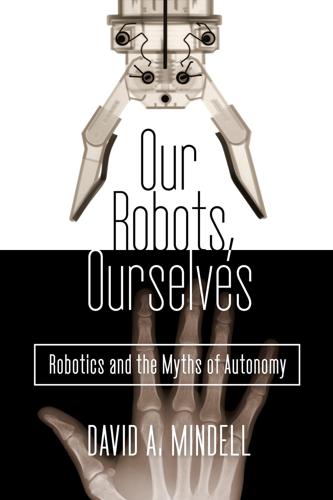
Our Robots, Ourselves: Robotics and the Myths of Autonomy
by
David A. Mindell
Published 12 Oct 2015
(Of course, human-factors specialists have long understood that human errors often are the result of poor system design and poor work practices.) Google introduced a new version of its car in 2014, one that seems designed to be friendly and unthreatening to the public. It travels at low speeds to reduce danger, has no driving wheel or console, and removes input from the human driver altogether. In the words of project director Chris Urmson, the company is “working toward the goal of vehicles that can shoulder the entire burden of driving.” These fully autonomous cars would be “designed to operate safely and autonomously without requiring human intervention.” The new car’s interface consists only of buttons to start and stop the engine, and a screen that shows the route (one wonders how the driver will tell the car where to go).
…
Let’s look inside an algorithm as an example of how deeply humanly crafted apparently autonomous code can be. Consider the first documented collision between autonomous cars. The Defense Advanced Research Projects Agency–sponsored competition, the DARPA Grand Challenge of 2007, generated some of the technology on which the Google car is based. Google’s Chris Urmson was the lead engineer on the winning team, and a number of other participants are now on the Google team. In the incident, the MIT car, called Talos, was passing the Cornell car, dubbed Skynet, which was having trouble with its planning algorithm and was stuttering along slowly by the side of the road.
…
Google discovered that “people are lazy”: Tom Simonite, “Lazy Humans Shaped Google’s New Autonomous Car,” MIT Technology Review (May 30, 2014), http://www.technologyreview.com/news/527756/lazy-humans-shaped-googles-new-autonomous-car/. Will Knight, “Driverless Cars Are Further Away Than You Think,” MIT Technology Review (October 22, 2013), http://www.technologyreview.com/featuredstory/520431/driverless-cars-are-further-away-than-you-think/. “kick back, relax, and enjoy the ride”: Chris Urmson, “Just Press Go: Designing a Self-Driving Vehicle,” Google official blog, May 27, 2014, http://googleblog.blogspot.com/2014/05/just-press-go-designing-self-driving.html, accessed July 9, 2014. Evan Ackerman, “Google’s Autonomous Cars Are Smarter Than Ever at 700,000 Miles,” IEEE Cars that Think Blog, April 29, 2014, accessed July 10, 2014.
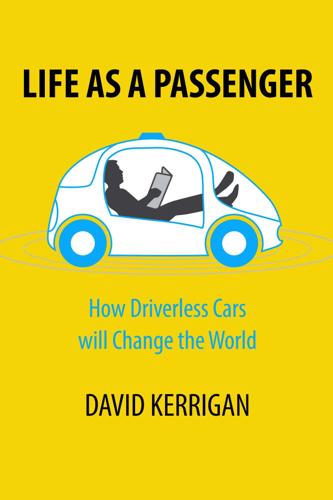
Life as a Passenger: How Driverless Cars Will Change the World
by
David Kerrigan
Published 18 Jun 2017
Those eager to facilitate driverless cars will be hoping to gain substantial economic advantage from the ecosystem that will grow to support driverless cars and to profit from the new time and consumption opportunities the technology will create. I’ll leave the last word in this section to Dr. Chris Urmson, former head of Google’s driverless cars project and founder of self-driving start-up, Aurora: "What's going to happen, no matter what the law says, is people are going to get sued. But that doesn't mean the development of potentially lifesaving technology should be halted. There wasn't legal protection for the Wright brothers when they made that first plane.
…
_r=0 Blogs: A selection of blogs on the topic of Driverless cars: http://penguindreams.org/blog/self-driving-cars-will-not-solve-the-transportation-problem/# http://utilware.com/autonomous.html http://ideas.4brad.com/rodney-brooks-pedestrian-interaction-andrew-ng-infrastructure-and-both-human-attitudes https://medium.com/@alexrubalcava/a-roadmap-for-a-world-without-drivers-573aede0c968 http://www.newgeography.com/content/005024-preparing-impact-driverless-cars http://blog.piekniewski.info/2017/05/11/a-car-safety-myths-and-facts/ https://medium.com/@christianhern/self-driving-cars-as-the-new-toolbar-8c8a47a3c598 https://backchannel.com/self-driving-cars-will-improve-our-cities-if-they-dont-ruin-them-2dc920345618#.4va0brsyg Videos: A selection of Videos on the topic of Driverless cars: Video of Tesla Auto pilot - https://thescene.com/watch/arstechnica/cars-technica-hands-on-with-tesla-s-autopilot https://youtu.be/tiwVMrTLUWg (15 Minute TED Talk by Chris Urmson of Google, 2015) * * * [1] http://www.mckinsey.com/~/media/McKinsey/Business%20Functions/McKinsey%20Digital/Our%20Insights/Disruptive%20technologies/MGI_Disruptive_technologies_Full_report_May2013.ashx [2] http://www.morganstanley.com/articles/autonomous-cars-the-future-is-now [3] http://www3.weforum.org/docs/Media/WEF_FutureofJobs.pdf [4] https://en.wikipedia.org/wiki/Roy_Amara [5] https://twitter.com/BenedictEvans/status/763209924302090240 [6] https://en.wikipedia.org/wiki/Zeno%27s_paradoxes#Dichotomy_paradox [7] https://twitter.com/BenedictEvans/status/771115479393906688 [8] https://lilium.com/ [9] https://www.uber.com/info/elevate/ [10] The Salmon of Doubt, Douglas Adams, 2002 [11] http://farmerandfarmer.org/mastery/builder.html [12] https://global.oup.com/academic/product/innovation-and-its-enemies-9780190467036?
…
Sloan, My Years with General Motors, 1964 [73] Door to Door: The Magnificent, Maddening, Mysterious World of Transportation, Edward Humes, 2016 [74] http://www.slate.com/articles/business/the_juice/2014/07/driving_vs_flying_which_is_more_harmful_to_the_environment.html [75] http://www.computerhistory.org/atchm/where-to-a-history-of-autonomous-vehicles/ [76] https://www.theatlantic.com/magazine/archive/2014/11/the-secret-history-of-the-robot-car/380791/ [77] https://www.dmv.ca.gov/portal/dmv/detail/vr/autonomous/testing [78] http://archive.darpa.mil/grandchallenge/ [79] http://www.sae.org/misc/pdfs/automated_driving.pdf [80] https://twitter.com/benedictevans/status/771233171518005248 [81] https://www.scientificamerican.com/article/what-nasa-could-teach-tesla-about-autopilot-s-limits/ [82] Human Error, James Reason, 1990, Cambridge University Press [83] http://www.nytimes.com/interactive/2016/12/14/technology/how-self-driving-cars-work.html [84] http://uk.businessinsider.com/how-googles-self-driving-cars-see-the-world-2015-10/#while-googles-cars-can-anticipate-a-lot-of-things-by-using-this-collected-data-there-are-still-going-to-be-situations-that-arise-that-have-never-happened-before-9 [85] Oxford English Dictionary, LiDAR [86] http://www.forbes.com/sites/alanohnsman/2016/12/13/velodyne-unveils-lower-cost-lidar-in-race-for-robo-car-vision-leadship/#5d5997903970 [87] https://techcrunch.com/video/udacitys-sebastian-thrun-is-democratizing-education-and-self-driving-cars/57d82caca6237819a6341ff2/ [88] https://www.engadget.com/2017/02/09/panasonics-new-image-sensor-could-help-cars-see-in-the-dark/ [89] http://www.pcworld.com/article/3195256/components/sonys-clever-image-sensor-helps-autonomous-cars-see-better.html [90] https://medium.com/waymo/building-maps-for-a-self-driving-car-723b4d9cd3f4 [91] http://www.telecompetitor.com/igr-average-monthly-broadband-usage-is-190-gigabytes-monthly-per-household/ [92] https://photos.google.com/share/AF1QipMohX-8qyL-jKD1gOOHffaG_3M2zzMVDTnBKm8rpZW_VZZHgLrWrhK_uNwabU0AKQ?key=ZmNvaGdkSmM2RE5WVW5Pcnl0S003bXhKU1hOY3R3 [93] https://blogs.nvidia.com/blog/2016/09/28/xavier/ [94] http://www.gamesradar.com/do-xbox-scorpios-6-teraflops-really-make-it-the-most-powerful-console-ever-lets-look-closer/ [95] https://www.ted.com/talks/chris_urmson_how_a_driverless_car_sees_the_road?language=en [96] https://www.udacity.com/course/self-driving-car-engineer-nanodegree--nd013 [97] https://www.cnet.com/roadshow/news/mcity-americas-true-nexus-of-self-driving-research/ [98] https://media.ford.com/content/fordmedia/fna/us/en/news/2017/01/04/alexa-car-ford-amazon-shop-search-home.html [99] https://www.wired.com/2017/01/car-dealers-dangerously-uneducated-new-safety-features/ [100] https://www.buzzfeed.com/matthewzeitlin/gm-president-driverless-cars-coming-sooner-than-you-think?
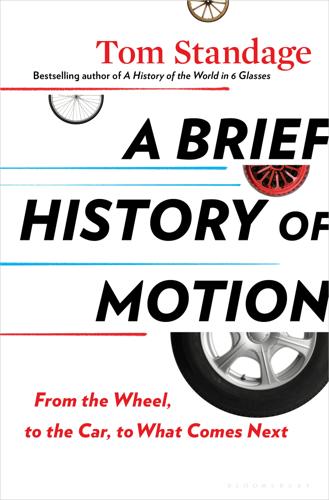
A Brief History of Motion: From the Wheel, to the Car, to What Comes Next
by
Tom Standage
Published 16 Aug 2021
As Thrun later told Wired magazine, “None of what is happening in self-driving today would have happened without the original challenge—it created a new community.” Encouraged by this rapid progress, Google established a self-driving car program in 2009, led by Thrun, who hired people he had met during the DARPA challenges, including Chris Urmson (a member of the rival Carnegie Mellon team) and Anthony Levandowski (who had built a self-driving motorcycle). “There was an incredible sense of camaraderie, and that community fostered the folks who are leading a lot of the technology today,” Urmson told Wired. Since then they and other participants in the various DARPA contests have gone on to work on autonomous-vehicle technology at Google, Uber, Tesla, and a host of start-ups, from Aurora to Zoox.
…
After being tested in simulation, the improved software is then rolled out in real vehicles. This process has been going on since 2012, when Google’s self-driving car unit—since renamed Waymo—was granted a license to begin testing in Nevada. The first journey took place on May 1 that year, with Grand Challenge veterans Chris Urmson and Anthony Levandowski in the front seats of a modified Toyota Prius, and two state officials in the back. The car passed its self-driving test, the world’s first, despite two disengagements, one of which happened when the vehicle was confused by construction work on the road and halted. Disengagements are to be welcomed if they occur when the car realizes that it cannot handle the situation.
…
Thank you to Richard Bulliet, Eric Morris, Joel Tarr, Kassia St. Clair, Stephen Davies, Tom Wheeler, Tony Hadland, Peter Norton, and Brian Ladd; to Joel Kotkin, Donald Shoup, Shlomo Angel, Alan Berger, Jarrett Walker, William Riggs, Richard Florida, and Chenoe Hart; and to Sebastian Thrun, Elon Musk, Chris Urmson, Sterling Anderson, Oliver Cameron, Stan Boland, and Karl Iagnemma. Finally, I wish to express my gratitude to my parents for indulging my obsession with cars from a young age, to my son, Miles, for all the car hunts in the automotive jungles of Knightsbridge and Goodwood, to my daughter, Tate, for her classical expertise and sharp eye as an editor, and finally, for putting up with all the horse manure stories, to my wife, Kirstin, to whom this book is dedicated.

Machine, Platform, Crowd: Harnessing Our Digital Future
by
Andrew McAfee
and
Erik Brynjolfsson
Published 26 Jun 2017
Perez, “ ‘Predictive Learning’ Is the New Buzzword in Deep Learning,” Intuition Machine, December 6, 2016, https://medium.com/intuitionmachine/predictive-learning-is-the-key-to-deep-learning-acceleration-93e063195fd0#.13qh1nti1. 81 Joshua Brown’s Tesla crashed: Anjali Singhvi and Karl Russell, “Inside the Self-Driving Tesla Fatal Accident,” New York Times, July 12, 2016, https://www.nytimes.com/interactive/2016/07/01/business/inside-tesla-accident.html. 82 it appears that neither Brown: Tesla, “A Tragic Loss,” June 30, 2016, https://www.tesla.com/blog/tragic-loss. 82 “Conventional wisdom would say”: Chris Urmson, “How a Driverless Car Sees the Road,” TED Talk, June 2015, 15:29, https://www.ted.com/talks/chris_urmson_how_a_driverless_car_sees_the_road/transcript?language=en. 82 “Our vehicles were driving through Mountain View”: Ibid. 83 The Japanese insurer Fukoku Mutual Life: Dave Gershgorn, “Japanese White-Collar Workers Are Already Being Replaced by Artificial Intelligence,” Quartz, January 2, 2017, https://qz.com/875491/japanese-white-collar-workers-are-already-being-replaced-by-artificial-intelligence. 83 “learn the history of past payment assessment”: Google Translate, “December 26, Heisei 28, Fukoku Life Insurance Company,” accessed January 30, 2017, https://translate.google.com/translate?
…
Perhaps Brown had become overconfident in the abilities of the self-driving system after seeing it operate effectively in many previous instances and had begun to pay less and less attention to the road. Google believes that because human inattention is a perennial problem, we need to be taken entirely out of the loop in driving. As Chris Urmson, the former head of the company’s self-driving car project, put it, “Conventional wisdom would say that we’ll just take these driver assistance systems and we’ll kind of push them and incrementally improve them, and over time, they’ll turn into self-driving cars. Well, I’m here to tell you that’s like me saying that if I work really hard at jumping, one day I’ll be able to fly.

The Long History of the Future: Why Tomorrow's Technology Still Isn't Here
by
Nicole Kobie
Published 3 Jul 2024
‘If people asked us what was on the cars, we’d say “it’s a laser” and just drive off,’ Levandowski said in an interview.18 The great tech journalist John Markoff revealed the project’s existence in the New York Times, describing a half-hour ride in one of the cars. He described how the car merged onto Highway 101 and managed city traffic in Mountain View via sensors and GPS, though engineer Chris Urmson – poached from the CMU DARPA team – was at the wheel as a safety driver, and had to take control twice in the short journey after a cyclist ran a red light and a car in front backed up to access a parking space. At the time, Google said in a blog post attributed to Thrun that the seven cars had driven as far as 1,600km (1,000 miles) without any human intervention, navigating the route between its Mountain View campus and its Santa Monica office, as well as taking in tourist sights such as crooked Lombard Street and the Golden Gate Bridge.
…
The safety driver faced charges of negligent homicide and significant potential jail time, but pleaded guilty to endangerment and was sentenced to three years’ probation. Uber has since ended its research into driverless cars, selling its technology to driverless trucking startup Aurora, led by ex-Waymo engineer Chris Urmson – though Uber also kept its fingers in the pie with a $400 million investment. * * * Here’s where we get into semantics: does a driverless car have a driver? I have been in truly driverless cars – no one at the wheel – and I’ve been in those with safety drivers just in case, or to take the wheel for parts of the route the vehicle couldn’t manage, or wasn’t allowed to by law.
…
DARPA has continued its investment in the area, more quietly than with the Grand Challenges, but has also admitted the whole thing has taken much longer than the US military would like. For city-bound vehicles, limited investor flight is already happening: Uber-rival ride-hailing app Lyft sold off its driverless division for $550 million to Toyota rather than burning through more cash. Chris Urmson has predicted it’ll be another three decades before driverless cars are widely available. There’s another issue with continuing the development of this driverless technology in this way: it might never work, ever. Or it might require another computing boost, new discoveries in AI, or some other technological leap we can’t yet foresee – or perhaps nothing will crack it, no matter what we do.

Artificial Unintelligence: How Computers Misunderstand the World
by
Meredith Broussard
Published 19 Apr 2018
Eventually, the source of the problem was identified: radio-frequency interference from the jumbotron television monitor located next to the race start chute. The jumbotron was jamming the GPS signals. Someone turned off the television. Boss hit the streets tenth, twenty minutes behind the Stanford car. It was not a high-speed endeavor: Boss averaged about 14 mph over the fifty-five-mile course. “Everything that I saw Boss do looked great,” said Chris Urmson, the team’s director of technology. “It was smooth. It was fast. It interacted with other traffic well. It did what it was supposed to do.” Boss came in first. The Stanford team came in second, with a time about twenty minutes behind Boss. Little Ben finished the race, but not in the money. Teams from Cornell and MIT finished too, but not within the six-hour time limit of the race.
…
One major drawback to the data is that there’s no weirdness built in, and the algorithms can’t predict what isn’t built in. Like in the Titanic data, there’s no way to account for strategies of jumping off the sinking ship after all the lifeboats have departed. In real life, weird stuff happens all the time. Former Waymo leader Chris Urmson, a Carnegie Mellon grad and Grand Challenge winner, laid out some of the strangest observations in a popular YouTube video. Waymo’s test versions of automated cars have been driving around Mountain View for years, collecting data. Urmson laughed as he showed a bunch of kids playing Frogger across the highway or a woman in an electric wheelchair chasing a duck in circles around the middle of the road.

Driverless: Intelligent Cars and the Road Ahead
by
Hod Lipson
and
Melba Kurman
Published 22 Sep 2016
To equip their SUV for the 2007 DARPA Challenge, the Cornell team spent $195,850 to buy lidar and radar sensors, a GPS, and a camera, and $46,550 to purchase several desktop computers, laptops, and peripherals.10 Although it cost less to outfit an autonomous vehicle in 2007 than it did in 1980, computers and sensors were still too slow to support autonomous driving. In a postmortem analysis of the 2007 DARPA Challenge, the leader of the CMU team, Chris Urmson (who later helped lead Google’s self-driving car initiative), ruefully noted that “available off-the-shelf sensors are insufficient for urban driving.”11 Fast forward again to the present day and the situation looks much more promising. Today, the cost of providing the data needed to feed a car’s mid-level control software is significantly less than in 2007.
…
At Carnegie Mellon University in Pittsburg, a series of outdoor self-driving field robots spanned thirty years of research, from the 1984 Terregator through the NavLab 1 (1986) and NavLab 2 (1992). 9. Yoshimasa Goto and Anthony Tentz, “Mobile Robot Navigation: The CMU System,” IEEE Expert 1987. 10. DARPA award contract issued to Cornell University. 11. Chris Urmson et al., “Autonomous Driving in Urban Environments: Boss and the Urban Challenge,” Journal of Field Robotics 25 (9) (2008): 426–464. 12. “Autonomous Cars: Self-Driving the New Auto Industry Paradigm,” Morgan Stanley Blue Paper, November 6, 2013. 13. Google Official Blog, “The Latest Chapter for the Self-Driving Car: Mastering City Street Driving,” April 28, 2014, https://googleblog.blogspot.nl/2014/04/the-latest-chapter-for-self-driving-car.html 14.

Rise of the Robots: Technology and the Threat of a Jobless Future
by
Martin Ford
Published 4 May 2015
Indeed, the systems under development within the automotive industry are almost universally geared toward partial automation—the idea being that the human driver always maintains ultimate control. Liability in the event of an accident may be one of thorniest potential issues surrounding fully automated cars; some analysts have suggested that there might be ambiguity as to who would be responsible. Chris Urmson, one of the engineers who led Google’s car project, said at an industry conference in 2013 that such concerns are misplaced, and that current US law makes it clear that the car’s manufacturer would be responsible in the event of an accident. It’s hard to imagine anything the automotive industry would fear more.
…
Further details are available at the DARPA Grand Challenge website: http://archive.darpa.mil/grandchallenge/. 9. Tom Simonite, “Data Shows Google’s Robot Cars Are Smoother, Safer Drivers Than You or I,” Technology Review, October 25, 2013, http://www.technologyreview.com/news/520746/data-shows-googles-robot-cars-are-smoother-safer-drivers-than-you-or-i/. 10. See ibid. for Chris Urmson’s comments. 11. “The Self-Driving Car Logs More Miles on New Wheels” (Google corporate blog), August 7, 2012, http://googleblog.blogspot.co.uk/2012/08/the-self-driving-car-logs-more-miles-on.html. 12. As quoted in Heather Kelly, “Driverless Car Tech Gets Serious at CES,” CNN, January 9, 2014, http://www.cnn.com/2014/01/09/tech/innovation/self-driving-cars-ces/. 13.

The End of Traffic and the Future of Transport: Second Edition
by
David Levinson
and
Kevin Krizek
Published 17 Aug 2015
New York Times http://www.nytimes.com/2010/10/10/science/10google.html?_r=2&src=sch&pagewanted=all Erico Guizzo (2011-10-18) How Google's Self-Driving Car Works IEEE Spectrum http://spectrum.ieee.org/automaton/robotics/artificial-intelligence/how-google-self-driving-car-works 156 These hires included Sebastian Thrun of Stanford and Chris Urmson of CMU, for their own internal secret project, which they announced in 2010. 157 Figure 7.1 Source: Data on Google Cars from 140,000 - http://googleblog.blogspot.com/2010/10/what-were-driving-at.html 300,000 http://googleblog.blogspot.com/2012/08/the-self-driving-car-logs-more-miles-on.html 500,000 http://www.businessinsider.com/google-self-driving-car-problems-2013-3?

The Economic Singularity: Artificial Intelligence and the Death of Capitalism
by
Calum Chace
Published 17 Jul 2016
Nevertheless, those edge cases are being tackled, and will be resolved. It is well-known that Google's self-driving cars have travelled well over a million miles in California without causing a significant accident, but what is less well-known is that the cars also drive millions of miles every day in simulators. Chris Urmson, head of the Google project, expects self-driving cars to be in general use by 2020.[clxxxvi] Sceptics point out that Google's self-driving cars depend on detailed maps. But producing maps for the roads outside California doesn't sound like an insurmountable obstacle, and in any case, systems like SegNet from Cambridge University enable cars to produce maps on the fly.
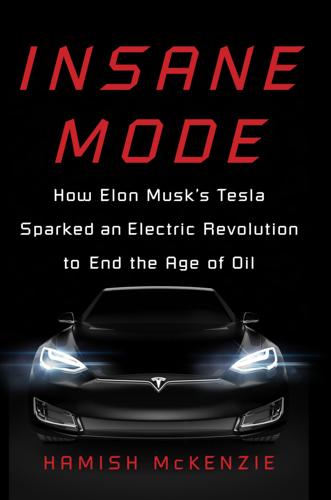
Insane Mode: How Elon Musk's Tesla Sparked an Electric Revolution to End the Age of Oil
by
Hamish McKenzie
Published 30 Sep 2017
Self-driving golf carts have already started roaming university campuses in California, and in August 2016 a company called nuTonomy started testing a free self-driving taxi service in a small business district in Singapore. But full autonomy for high-speed cars could take much longer. At the South by Southwest tech conference in March 2016, Chris Urmson, who was then the head of Google’s self-driving car program, said that in some places autonomous vehicles won’t be on the roads for as many as thirty years. At the same time, Elon Musk, ever the optimist, has said that he thinks Tesla’s cars will be ready for “complete autonomy” by 2018, but that the regulatory process will add another year to the rollout.
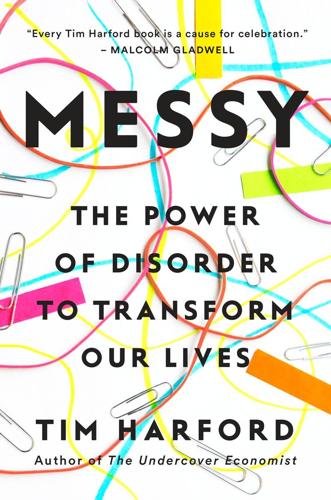
Messy: The Power of Disorder to Transform Our Lives
by
Tim Harford
Published 3 Oct 2016
However, the younger generation of meteorologists are happier to trust the computers. Once the veterans retire, the human expertise to intuit when the computer has screwed up will be lost forever.18 • • • We’ve seen the problems with GPS systems and with autopilot. Put the two ideas together, and you get the self-driving car. Chris Urmson, who runs Google’s self-driving car program, hopes that the cars will soon be so widely available that his sons will never need to have a driving license. (His oldest son will be sixteen in 2020—Urmson is in a hurry.) There’s a revealing implication in that target: that unlike a plane’s autopilot, a self-driving car will never need to cede control to a human being.
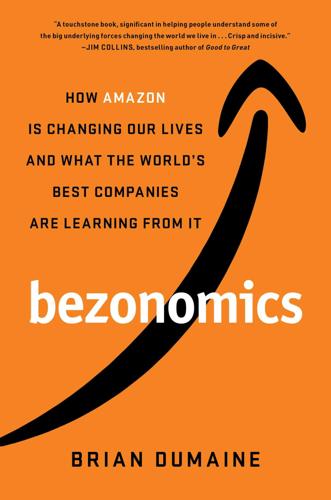
Bezonomics: How Amazon Is Changing Our Lives and What the World's Best Companies Are Learning From It
by
Brian Dumaine
Published 11 May 2020
In early 2019, Amazon led a $700 million investment round in Rivian, a Michigan company that is developing a battery-powered pickup truck and a sport utility vehicle. Ford later that year invested another $500 million in the company. Around the same time, Amazon led a $530 million investment round for Aurora, a Silicon Valley self-driving vehicle start-up founded by three stars of this emerging industry: Sterling Anderson, Drew Bagnell, and Chris Urmson. Anderson ran Tesla’s autopilot program, Bagnell headed the autonomy and perception team at Uber, and Urmson was the former head of Google’s self-driving project, which has morphed into one of the leading self-driving car companies: Waymo. Aurora will not build cars but is developing the AI brains behind autonomous vehicles and plans to partner with retailers like Amazon and major automakers to create state-of-the-art autonomous vehicles.
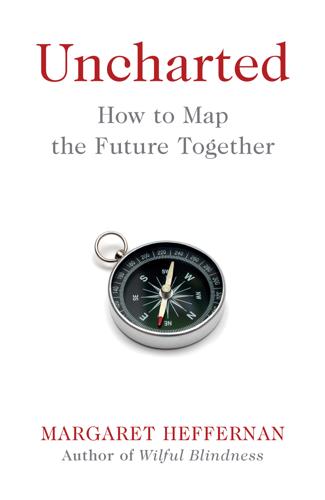
Uncharted: How to Map the Future
by
Margaret Heffernan
Published 20 Feb 2020
See Silver, Nate, The Signal and the Noise: The Art and Science of Prediction, Penguin Books, London, 2013 14 See The Economist, 17 March 2018, p.39 15 I’m indebted to David Kedmey for pointing this out 16 ‘The Risk of Automation for Jobs in OECD Countries’, www.oecd-ilibrary.org/social-issues-migration-health/the-risk-of-automation-for-jobs-in-oecd-countries_5jlz9h56dvq7-en, accessed 14 October 2018 and 27 October 2019 17 ‘5 Things to Know about the Future of Jobs’, www.weforum.org/agenda/2018/09/future-of-jobs-2018-things-to-know/ 18 Google’s Chris Urmson suggested that the autonomous vehicle ‘has the potential to reduce current Federal spending pressures for roadways, parking and public transit’. Wolmar, Christian, Driverless Cars: On a Road to Nowhere, London Publishing Partnership, 2018 19 For examples here, see Eubanks, Virginia, Automating Inequality: How High-Tech Tools Profile, Police and Punish the Poor, St Martin’s Press, New York, 2017, as well as O’Neill, Cathy, Weapons of Math Destruction: How Big Data Increases Inequality and Threatens Democracy, Allen Lane, London, 2016, and reports from the AI Now Institute: ainowinstitute.org 20 ‘Overcoming Speed Bumps on the Road to Telematics’, www2.deloitte.com/content/dam/insights/us/articles/telematics-in-auto-insurance/DUP-695_Telematics-in-the-Insurance-Industry_vFINAL.pdf, accessed 20 August 2019.

Augmented: Life in the Smart Lane
by
Brett King
Published 5 May 2016
When comparing autonomous driving patterns with those of drivers in control of Google’s vehicles, Google found that when a human was behind the wheel, Google’s cars accelerated, cornered and braked more sharply than when the car was piloting itself. Other data showed that the autonomous software was much better and more consistent at maintaining a safe distance from the vehicle ahead. “We’re spending less time in near-collision states,” said Chris Urmson, the leader of Google’s autonomous car project at a robotics conference in 2013. “Our car is driving more smoothly and more safely than our trained professional drivers.” Google’s self-driving car has the most data publicly available about this incredible autonomous capability, but other car manufacturers like Tesla, Audi, BMW, Mercedes and Volvo all say similar things about the future of driving.
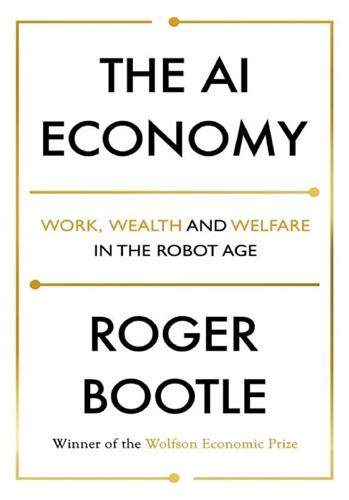
The AI Economy: Work, Wealth and Welfare in the Robot Age
by
Roger Bootle
Published 4 Sep 2019
Additionally, there would be less demand for space to park cars that remain idle most of the time. While they are waiting for users, driverless cars can be parked end to end and stacked. This could potentially transform urban landscapes and free up much scarce space for other uses. In 2016, Google’s Chris Urmson told a US Congressional Committee that in the US parking takes up an area the size of Connecticut. By implication, if everything went according to plan with driverless cars, this space could be freed up for other uses. And the potential implications go wider still. Perhaps traffic wardens would also disappear as the need to restrict parking becomes less of an issue.

Exponential: How Accelerating Technology Is Leaving Us Behind and What to Do About It
by
Azeem Azhar
Published 6 Sep 2021
Kramer, ‘The Biggest Thing Amazon Got Right: The Platform’, Gigaom, 12 October 2011 <https://gigaom.com/2011/10/12/419-the-biggest-thing-amazon-got-right-the-platform/> [accessed 18 September 2020]. 30 The approach has become de rigueur among other digital cognoscenti, but Bezos’s email should surely be considered as one of the single most important internal communications of all time. 31 Chris Johnston, ‘Amazon Opens a Supermarket with No Checkouts’, BBC News, 22 January 2018 <https://www.bbc.com/news/business-42769096> [accessed 18 September 2020]. 32 Peter Holley, ‘Amazon’s One-Day Delivery Service Depends on the Work of Thousands of Robots’, Washington Post, 7 June 2019 <https://www.washingtonpost.com/technology/2019/06/07/amazons-one-day-delivery-service-depends-work-thousands-robots/> [accessed 18 September 2020]. 33 Harry Dempsey, ‘Amazon to Hire Further 100,000 Workers in US and Canada’, 14 September 2020 <https://www.ft.com/content/9817aae3-1e89-4383-aa34-742447d5794a> [accessed 18 September 2020]. 34 ‘Netflix Continues to Hire Through the Pandemic, Says Co-CEO Reed Hastings’, Bloomberg, 9 September 2020 <https://www.bloomberg.com/news/videos/2020-09-09/netflix-continues-to-hire-through-the-pandemic-video> [accessed 18 September 2020]. 35 ‘Netflix: Number of Employees 2006-2020’, Macro Trends <https://www.macrotrends.net/stocks/charts/NFLX/netflix/number-of-employees> [accessed 27 March 2021]. 36 Vishnu Rajamanickm, ‘JD.Com Opens Automated Warehouse That Employs Four People but Fulfills 200,000 Packages Daily’, FreightWaves, 25 June 2018 <https://www.freightwaves.com/news/technology/jdcom-opens-automated-warehouse-that-employs-four-people-but-fulfills-200000-packages-daily> [accessed 27 March 2021]. 37 Reuters Staff, ‘Dish to Close 300 Blockbuster Stores, 3,000 Jobs May Be Lost’, Reuters, 23 January 2013 <https://www.reuters.com/article/us-blockbuster-storeclosings-idUSBRE90M05I20130123> [accessed 7 January 2021]. 38 Daron Acemoglu, Claire LeLarge and Pascual Restrepo, Competing with Robots: Firm-Level Evidence from France, Working Paper Series (National Bureau of Economic Research, February 2020) <https://doi.org/10.3386/w26738>. 39 Daron Acemoglu and Pascual Restrepo, Robots and Jobs: Evidence from US Labor Markets, Working Paper Series (National Bureau of Economic Research, March 2017) <https://doi.org/10.3386/w23285>. 40 David Klenert, Enrique Fernández-Macías and José-Ignacio Antón, ‘Don’t Blame It on the Machines: Robots and Employment in Europe’, VoxEU, 24 February 2020 <https://voxeu.org/article/dont-blame-it-machines-robots-and-employment-europe> [accessed 10 September 2020]. 41 Till Leopold et al., The Future of Jobs 2018, World Economic Forum <https://wef.ch/2NH6NiV> [accessed 25 September 2020]. 42 Leslie Willcocks, ‘Robo-Apocalypse Cancelled? Reframing the Automation and Future of Work Debate’, Journal of Information Technology, 35(4), 2020, pp. 286–302 <https://doi.org/10.1177/0268396220925830>. 43 Chris Urmson, personal correspondence with the author, 26 February 2021. 44 ‘Will AI Destroy More Jobs Than It Creates Over the Next Decade?’, Wall Street Journal, 1 April 2019 <https://www.wsj.com/articles/will-ai-destroy-more-jobs-than-it-creates-over-the-next-decade-11554156299> [accessed 11 January 2021]. 45 ‘Company Information’, Uber Newsroom Pakistan <https://www.uber.com/en-PK/newsroom/company-info/> [accessed 21 September 2020]. 46 ‘Mechanical Turk: Research in the Crowdsourcing Age’, Pew Research Center: Internet & Technology, 11 July 2016 <https://www.pewresearch.org/internet/2016/07/11/research-in-the-crowdsourcing-age-a-case-study/> [accessed 28 September 2020]. 47 Jeff Howe, ‘The Rise of Crowdsourcing’, Wired, 1 June 2006 <https://www.wired.com/2006/06/crowds/> [accessed 28 September 2020]. 48 Nicole Lyn Pesce, ‘This Chart Shows How Uber Rides Sped Past NYC Yellow Cabs in Just Six Years’, MarketWatch, 9 August 2019 <https://www.marketwatch.com/story/this-chart-shows-how-uber-rides-sped-past-nyc-yellow-cabs-in-just-six-years-2019-08-09> [accessed 7 January 2021]. 49 Kelle Howson et al., ‘Platform Workers, the Future of Work and Britain’s Election’, Media@LSE, 11 December 2019 <https://blogs.lse.ac.uk/medialse/2019/12/11/platform-workers-the-future-of-work-and-britains-election/> [accessed 7 January 2021]. 50 James Manyika et al., Connecting Talent with Opportunity in the Digital Age (McKinsey & Company, 1 June 2015) <https://www.mckinsey.com/featured-insights/employment-and-growth/connecting-talent-with-opportunity-in-the-digital-age> [accessed 6 October 2020]. 51 Neil Munshi, ‘Tech Start-Ups Drive Change for Nigerian Truckers’, Financial Times, 26 August 2019 <https://www.ft.com/content/c6a3d1f2-c27d-11e9-a8e9-296ca66511c9> [accessed 21 September 2020]. 52 ‘Upwork Reports Fourth Quarter and Full Year 2020 Financial Results’, Upwork Inc., 23 February 2021 <https://investors.upwork.com/news-releases/news-release-details/upwork-reports-fourth-quarter-and-full-year-2020-financial> [accessed 21 April 2021]. 53 Lijin Yeo, ‘The U.S.

Machines of Loving Grace: The Quest for Common Ground Between Humans and Robots
by
John Markoff
Published 24 Aug 2015
Although only a fraction of those enrolled in the course would ultimately complete it, it became a global “Internet moment”: Thrun and Norvig’s class raised the specter of a new low-cost form of education that would not only level the playing field by putting the world’s best teachers within reach of anyone in the world, but also threaten the business models of high-priced elite universities. Why pay Stanford tuition if you could take the course anyway as a City College student? Thrun was still nominally participating one day a week at Google, but the project leadership role was taken by Chris Urmson, a soft-spoken roboticist who had been Red Whittaker’s chief lieutenant in the DARPA vehicle challenges. He had been one of the first people that Thrun hired after he came to Google to start the then secret car program. In the summer of 2014 he said he wanted to create a reliable driverless car before his son reached driving age, which was about six years in the future.

Super Pumped: The Battle for Uber
by
Mike Isaac
Published 2 Sep 2019
Without telling his bosses, Levandowski hired an outside lobbyist in Nevada to write a new law that allowed autonomous vehicles to operate in the state without a backup safety driver. Google executives were furious, yet the law passed statewide in 2011. Levandowski’s divisive methods earned him enemies. When he made a play to become leader of the Google X autonomous vehicle unit, a group of employees staged a mutiny, requiring Page himself to step in and name Chris Urmson, a rival of Levandowski’s, the head of the self-driving division. Levandowski was crushed and made no attempt to hide it; at one point, he stopped coming into work entirely. Levandowski was in agony; he worked for the company with the most advanced tech in self-driving vehicles, yet seemed happy to let some other, more aggressive competitor take the lead.

The Zero Marginal Cost Society: The Internet of Things, the Collaborative Commons, and the Eclipse of Capitalism
by
Jeremy Rifkin
Published 31 Mar 2014
Lawrence Burns, “A Vision of Our Transport Future,” Nature 497 (May 9, 2013): 181–82. 18. Ibid. 19. Joann Muller, “With Driverless Cars, Once Again It Is California Leading the Way,” Forbes, September 26, 2012, http://www.forbes.com/sites/joannmuller/2012/09/26/with-driverless-cars -once-again-it-is-california-leading-the-way/ (accessed June 2, 2013). 20. Chris Urmson, “The Self-Driving Car Logs More Miles on New Wheels,” Google Blog, August 7, 2012, http://googleblog.blogspot.com/2012/08/the-self-driving-car-logs-more-miles-on.html (accessed June 2, 2013). 21. Mary Slosson, “Google Gets First Self-Driven Car License in Nevada,” Reuters, May 8, 2012, http://www.reuters.com/article/2012/05/08/uk-usa-nevada-google-idUSLNE84701320120508 (accessed June 3, 2013). 22.

Homo Deus: A Brief History of Tomorrow
by
Yuval Noah Harari
Published 1 Mar 2015
In fact, the vast majority of our conscious decisions do not involve such issues at all. 6. Christopher Steiner, Automate This: How Algorithms Came to Rule Our World (New York: Penguin, 2012), 215; Tom Vanderbilt, ‘Let the Robot Drive: The Autonomous Car of the Future is Here’, Wired, 20 January 2012, accessed 21 December 2014, http://www.wired.com/2012/01/ff_autonomouscars/all/; Chris Urmson, ‘The Self-Driving Car Logs More Miles on New Wheels’, Google Official Blog, 7 August 2012, accessed 23 December 2014, http://googleblog.blogspot.hu/2012/08/the-self-driving-car-logs-more-miles-on.html; Matt Richtel and Conor Dougherty, ‘Google’s Driverless Cars Run into Problem: Cars with Drivers’, New York Times, 1 September 2015, accessed 2 September 2015, http://www.nytimes.com/2015/09/02/technology/personaltech/google-says-its-not-the-driverless-cars-fault-its-other-drivers.html?